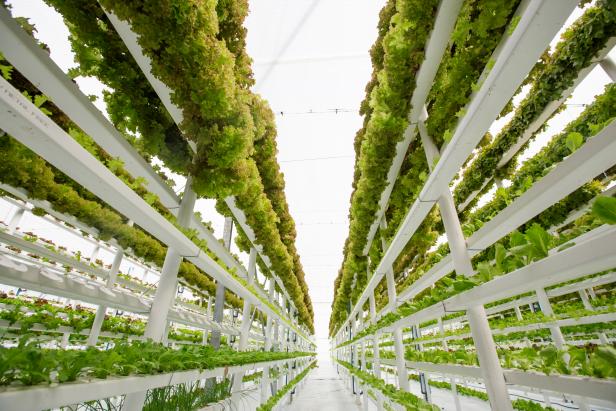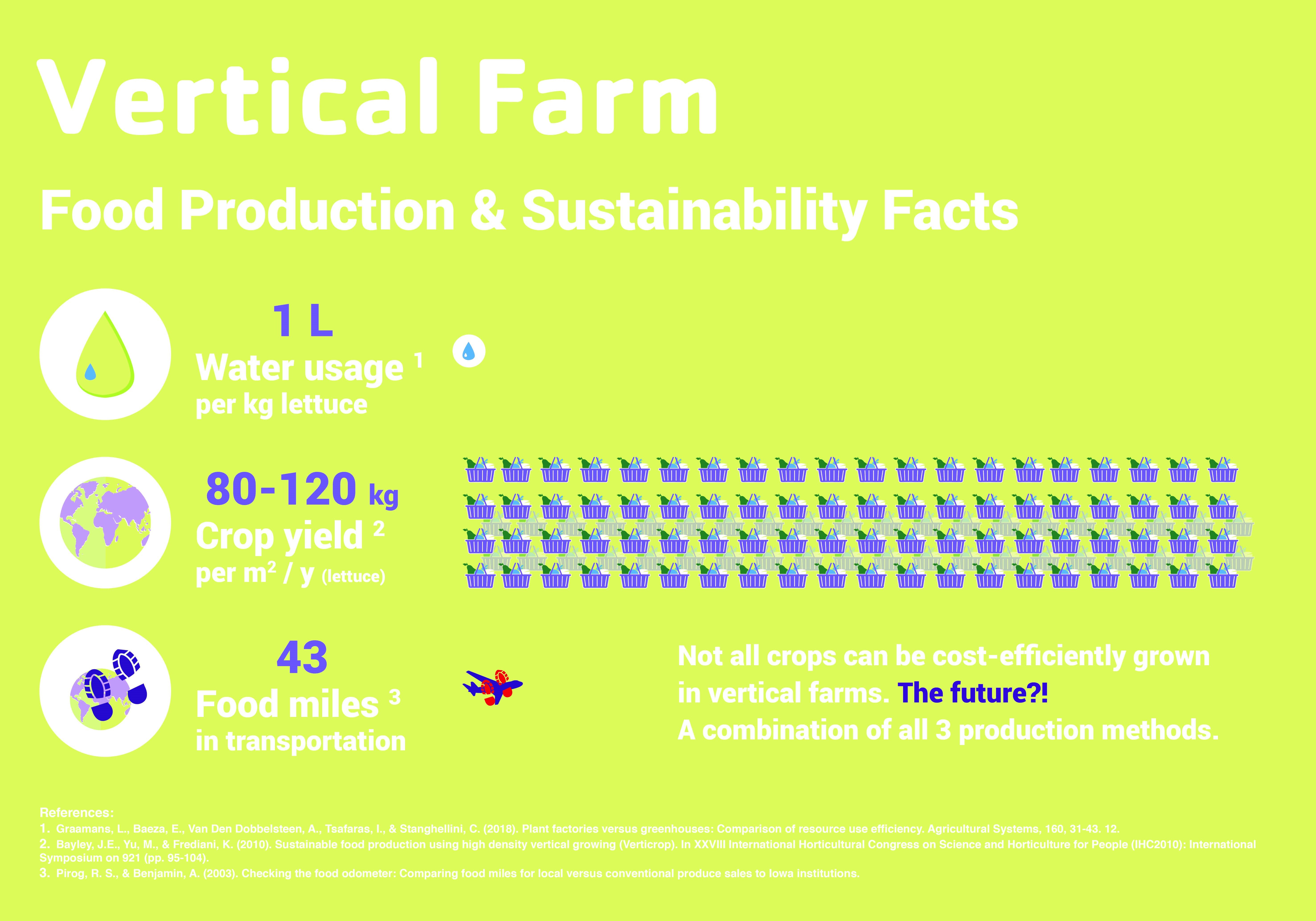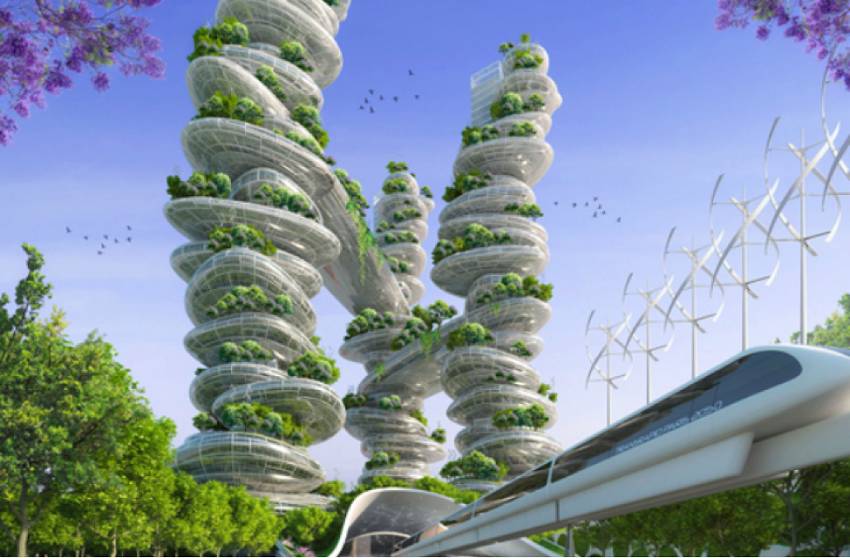Imagine a future where America leads the way in adopting innovative agricultural practices like vertical farming, revolutionizing the way we produce fresh, healthy, pesticide-free produce. In this visionary world, vertical farming utilizes a fraction of the land and water compared to traditional methods. Cities across America harness this technology to locally produce their own food, drastically reducing the need for long-distance transportation and consequently cutting down on carbon emissions. Vertical farming, adaptable to any climate, ensures year-round crop cultivation, bolstering food security and contributing to a greener planet. This may seem like an idealistic scenario, but the transformative potential of vertical farming is undeniable. Read on to discover why vertical farming is poised to be a game-changer, not only in how we cultivate our food but also in how we shape our future in America and beyond.
1. Introduction: Why Vertical Farming Matters
Vertical farming matters today more than ever, as it is an step toward creating a more sustainable and efficient food production system for the future. Some key aspects that highlight its importance include:
• Addressing Food Security: The United States Department of Agriculture (USDA) is committed to exploring vertical farming as a means of promoting food security across the nation. Workshops and funding opportunities are already in place to encourage research and development in this emerging field.
• Coping with Climate Change Challenges: As the world faces the consequences of a rapidly changing climate, the need to feed 10 billion people with limited resources becomes a pressing concern. Vertical farming offers a solution by using space in a more efficient manner, resulting in higher crop yields with less water and land use.
• Building on Historical Agricultural Practices: The concept of vertical farming is not entirely new, as we can see in historical examples such as the Babylonian Hanging Gardens, the Mesoamerican Aztec floating gardens and the walled gardens in 17th century France and the Netherlands. These innovations paved the way for controlled environment agriculture (CEA) that we see today.
• The Advantages of Controlled Environment Agriculture: CEA allows for customization of individual plant needs, optimizing growth and productivity. Vertical farming, as an extension of CEA, maximizes space usage by stacking crops vertically, thereby considerably increasing overall production per acre.
In conclusion, the significance of vertical farming lies in its potential to bring forth a more sustainable and efficient future for food production. By harnessing its advantages and learning from historical agricultural practices, we can aim to reshape the food system for the better. [1][2]
2. The Limits of Traditional Farming Operations
The Limits of Traditional Farming Operations
Traditional farming operations face numerous challenges, including land limitations, seasonality, and environmental impact. However, vertical farming offers a promising solution to overcome these challenges. Here are some of the advantages:
- Efficiency: One acre of vertical farming can provide the produce equivalent to between 4 to 6 acres of conventional production, ensuring better utilization of space and resources. - Better control and stability: With Controlled Environment Agriculture (CEA) systems, production is not vulnerable to variability factors such as climate or pests and pathogens, offering a more stable model for reliable food production. - Environmental benefits: Vertical farming uses 70-80% less water and reduces nutrient loss to the environment. It also addresses the global problem of nitrogen loss (around 50%), which poses environmental and human health risks. - Improved security and safety: High levels of control in CEA systems reduce the interaction between crops and pests or pathogens, increasing food security and safety. In extreme instances, production can be resumed in the short-term, unlike in traditional agriculture where it often leads to a lost year. - Life cycle analysis (LCA) shows CEA systems offer improved resource efficiency, reducing adverse environmental impacts while maintaining high-quality yield.
Implementing vertical farming as an alternative to traditional farming operations presents an opportunity for increased efficiency, quality, and environmental benefits, ultimately addressing the growing need for food security as the global population continues to rise. [3][4]

3. Vertical Farming as a Solution for Sustainability
Vertical farming is a highly efficient and sustainable way of producing food that offers several advantages over traditional agriculture. As a solution for sustainability, this innovative method has gained significant attention in recent years. Some key points to consider include:
- Vertical farms grow plants indoors in layers using LED lighting and controlled growing and nutrition systems. This allows for a more efficient use of space and reduces the need for pesticides in food production. - Europe's largest vertical farm, developed by Nordic Harvest, is capable of producing 1,000 tonnes of food per year. This showcases the potential for large-scale food production using vertical farming methods. - The technology used in vertical farms, such as software, robotics, and data science, enables precise control of the growing environment. This helps to reduce the environmental impact of food production and eliminate the need for harmful pesticides. - Through vertical farming, fresh produce can be grown year-round, regardless of season or weather conditions. This ensures a steady supply of food and contributes to greater food security. - Vertical farming can potentially reduce the need for transporting produce over long distances, as it can supply locally-grown food. This results in fresher food and lowers the amount of fuel used during transportation.
Despite the potential benefits of vertical farming, there are challenges such as the high cost of technology and real estate, along with energy consumption. However, the industry is growing rapidly, indicating that vertical farming has a promising future in addressing the world's food sustainability needs. [5][6]

4. Overcoming Challenges with Climate Change
Climate change poses numerous challenges to traditional farming, such as unpredictable weather patterns, leading to droughts, floods, and storms. Vertical farming offers potential solutions to overcome these challenges. By elevating agriculture to indoor facilities, vertical farming enables:
- Controlled environments: Farmers are no longer at the mercy of unpredictable weather patterns by growing crops indoors in climate-controlled spaces. - Efficient resource management: Vertical farming maximizes natural resources by using 70-80% less water and reducing land requirements by 10-20 times compared to conventional farming. - Reduced environmental impact: The precise control of resources in vertical farming minimizes nutrient losses to the environment, emissions of greenhouse gases, and the use of pesticides and fertilizers. - Improved food security: The ability to grow crops in any season and weather conditions makes vertical farming a more stable model for future food production. Moreover, the production of healthy and nutritious food is more accessible and affordable, even on low-value lands.
Vertical farming is a promising future for food production, offering enhanced efficiency, quality, and sustainability, as well as addressing food insecurity and inequity. With a growing global population, the need for innovative solutions has never been more vital to feed billions of people while minimizing the impact on our planet. Vertical farming stands as a beacon of hope for a sustainable and secure food future. [7][8]

5. Advantages of Indoor Controlled Environments
Vertical farming has taken the world by storm owing to its numerous advantages, especially when it comes to indoor controlled environments. Some of these benefits include:
- Optimized space utilization leading to much higher food production per square meter of land. This process uses stacking techniques, allowing 75 times more food to be produced for the growing urban population.
- Indoor vertical farming reduces overall water usage by up to 90% by accurately determining the precise moisture balance needed for each crop. This method is highly sustainable and helps in water conservation.
- The controlled environment ensures a safer product reaches our plates by reducing the threat of pollution and the risk of illness. This improved crop quality contributes to feeding more people with healthier, nutrient-rich food.
- Vertical farming is environmentally friendly as it excludes pesticides from the process, reducing the impact on the environment and promoting greener, sustainable farming solutions.
- Proximity to the market minimizes transportation costs, CO2 emissions, and the need for refrigerated storage, resulting in fresher produce. This approach also significantly reduces the massive fossil fuel consumption typically required for traditional farming equipment.
To conclude, indoor vertical farming is a game-changer when it comes to addressing the world's food demands in an environmentally friendly, sustainable manner. Vertical farming's many advantages show great promise in providing a secure future for food production and catering to the needs of an ever-growing population. [9][10]

6. Increased Efficiency and Quality in Food Production
Vertical farming offers various benefits that contribute to increased efficiency and quality in food production:
- Enhanced Resource Utilization: Vertical farming enables spatial efficiency by occupying up to 0.02% of the space as compared to traditional methods for the same amount of produce. By stacking crops, the agricultural space can be condensed significantly.
- Reduced Water Consumption: Indoor farming methods use up to 90% less water than conventional techniques. Most of the water can be recirculated in irrigation systems to minimize waste, addressing the water overconsumption issue.
- Improved Soil Health: Traditional horizontal agriculture has led to land degradation, soil contamination, and water pollution. Vertical farming provides a sustainable alternative without compromising soil health and quality.
- Year-Round Production: Controlled Environment Agriculture (CEA) allows optimization of plant growth conditions, resulting in the consistent production of various crops throughout the year. This eliminates the constraints of seasonal dependencies in food supply.
- Location Proximity: Vertical farms allow for food production to be geographically closer to points of consumption, improving freshness and reducing transportation emissions.
- Pesticide-Free: Indoor farming eliminates the need for pesticides in crop growth, ensuring a safer and eco-friendly food production process.
However, vertical farming still faces challenges, such as high energy demands for cooling and dehumidification. It generally focuses on specific types of crops, like leafy greens, limiting the overall food diversity. Nevertheless, innovative technology advancements, such as energy-efficient LED lights and automated climate control systems, hint at a promising future for vertical farming in revolutionizing the food production landscape. [11][12]

7. Reduced Environmental Impact with Vertical Farming
Reduced Environmental Impact with Vertical Farming
Vertical farming offers a sustainable approach to agriculture, addressing the challenges of feeding an ever-growing population. The salient features and benefits of this modern farming technique include:
- A controlled environment: Farmers can grow crops indoors, making them less dependent on weather conditions. This enables more consistent production and quality.
- Efficient use of resources: Vertical farming systems generally use less water, fertilizer, and eliminate the need for pesticides. Furthermore, vertical farms can be built in urban areas, minimizing transportation needs and reducing overall carbon emissions.
- Enhanced food quality and safety: As plants are grown indoors, processes that can degrade nutritional value, such as chlorine baths for leafy greens, are not necessary. This leaves more of the plant's nutrition intact.
Vertical farming can contribute significantly to food sustainability goals:
- Improved nutrition targets: Indoor vertical farms can help grow more nutritious foods while using fewer resources and requiring less land.
- Shorter supply chains: By constructing vertical farms closer to densely populated areas, healthier food choices can become more accessible and affordable as transportation costs decrease.
- Supporting local communities: This approach can create a more equitable food system by reaching historically underserved communities and providing fresher, healthier food options at more affordable prices.
The global vertical farming market is expected to grow rapidly, reaching approximately $20 billion by 2025. This growth is driven by increasing consumer awareness about the environmental impact of traditional agriculture and the need for innovative, sustainable, and efficient farming techniques, such as vertical farming, in the fight against climate change and resource depletion. [13][14]

8. Addressing Food Insecurity and Inequity Across the Globe
Addressing food insecurity and inequity has become a major global challenge. One promising solution is vertical farming, which utilizes advanced technology to increase agricultural production in urban settings. Here are some key points about how vertical farming can contribute to addressing these pressing issues:
- Conventional farming struggles to keep up with the growing global population and changing environmental conditions. Vertical farming offers a more sustainable alternative, capable of meeting the increasing food demands as the global population is projected to rise to 9.7 billion in 2050. - Vertical farms use up to 90% less water compared to traditional agriculture, conserving valuable resources and reducing the overall costs of food production. - Improved supply chain efficiency is observed in vertical farming, as perishable crops have a lower chance of spoiling during harvesting, packaging, processing, and distribution. This results in a reduction in food waste and ensures access to fresh produce for many communities. - Vertical farming can provide fresh, healthy food options for low-income families in both industrialized and developing countries helping to combat malnutrition and food-related diseases such as obesity and diabetes. - Climate change and extreme weather events have made agriculture increasingly vulnerable. Vertical farming enables predictable and consistent production, irrespective of weather conditions and natural disasters.
Despite the high upfront investment required, vertical farming has gained significant attention, with leading indoor farming operations raising over $500 million each. As the world searches for innovative solutions to address food insecurity and inequality, vertical farming emerges as a promising approach that can have a lasting impact on the future of food production. [15][16]

9. Future Opportunities for Vertical Farming Investment
As the global population continues to increase, the demand for food is projected to reach unprecedented levels. Traditional agriculture faces numerous challenges, such as climate change, resource management and environmental impact, and unequal access to healthy food. Addressing these issues may require innovative solutions like vertical farming.
Vertical farming involves growing crops indoors in vertical layers, using LED lighting and controlled growing and nutrition systems. These facilities offer several benefits:
- Efficient use of space, producing more food in less area. - Sustainable practices, using 250 times less water than traditional farms. - Elimination of pesticide use, thanks to controlled environments. - Year-round production of fresh produce.
These advantages make vertical farming a promising solution for a more sustainable global food supply. In addition to reducing the environmental impact of agriculture, vertical farms can also contribute to improved food equity by making healthier choices more accessible and affordable to a wider range of communities.
The vertical farming market is expected to grow significantly, from $5.5 billion in 2020 to around $20 billion by 2025. This growth is driven by increasing investment in vertical farming technology and heightened consumer awareness about the environmental impact of food production.
However, cost remains a significant hurdle to widespread adoption of vertical farming. High expenses for real estate, technology, and energy are among the challenges that need to be addressed for vertical farming to become a truly global solution.
In conclusion, vertical farming offers great promise as a sustainable and efficient approach to food production. With continued investment and advancements in technology, it has the potential to revolutionize agriculture and help meet the growing demands of our global population. [17][18]

10. Conclusion: The Promise of Vertical Farming for the Future of Food
In conclusion, vertical farming holds immense promise for the future of food production. By leveraging advanced technology and efficient techniques, this innovative farming method offers numerous benefits that can revolutionize the way we produce and consume food.
Key points to consider about vertical farming include: * Efficient use of space: Vertical farming allows for a substantial amount of agricultural space to fit into much smaller physical spaces, creating more food in less space. * Reduced carbon emissions: The agriculture industry generates approximately 8.5% of global annual emissions; adopting vertical farming can significantly reduce this percentage. * Lower water consumption: Vertical farming systems use up to 90% less water compared to traditional agricultural methods, promoting sustainable water usage. * Improved soil health: Conventional farming methods have led to increased land degradation, soil and water contamination. Vertical farming can prevent further damage to our planet's soil health. * Year-round crop production: Vertical farming enables continuous crop growth, free from seasonal limitations, ensuring a reliable food supply throughout the year.
Although challenges remain, such as high initial costs and reliance on non-renewable energy sources, the global vertical farming market is expected to grow from $5.5 billion in 2020 to around $20 billion by 2025. There is no doubt that vertical farming will play a pivotal role in addressing the increasing demand for food while simultaneously reducing the environmental impact of agriculture. As more people embrace this cutting-edge farming method, we can strive towards a healthier, safer, and more sustainable world. [19][20]
as we examine the transformative potential of vertical farming and its impact on the future of food, it is evident that America plays a crucial role in this agricultural revolution. With its diverse landscapes, innovative spirit, and commitment to sustainability, America is poised to lead the way in advancing vertical farming technologies and practices. As the nation continues to address the challenges of food security, environmental sustainability, and efficient resource utilization, vertical farming stands as a beacon of hope and progress. By harnessing the power of vertical farming, America can not only secure its own food supply but also inspire global change, ushering in a brighter, more sustainable future for food production on both a national and international scale
Thank you https://hydroponicharmony.com
https://hydroponicharmony.com/vertical-farming/?feed_id=5237&_unique_id=65f8c4c51d108
No comments:
Post a Comment